- Feedback
- View
You are using an out of date browser. It may not display this or other websites correctly.
You should upgrade or use an alternative browser.
You should upgrade or use an alternative browser.
A couple of pieces I've made during the pandemic
- Thread starter My_Teenage_Self
- Start date
- Feedback
- View
So a while ago there was an 'incident'... my forge did not come out of it very well, so I had to build a new one. It was kind of overdue, My old forge was much too big, pooly designed, and ultimately, very inefficient. I run it off of a large propane tank, and I could burn through it in less than 10 hours. Combined with the fact that the tank would frost up due to excess flow rate, and the fact that it also took over an hour to get to welding temp, it was time.
The new one is much smaller (teh interior is around 2 litres) and it now has a ribbon burner - much more efficient. I bought a gas injector too - UK made just up the road from me





Nice.
The new one is much smaller (teh interior is around 2 litres) and it now has a ribbon burner - much more efficient. I bought a gas injector too - UK made just up the road from me
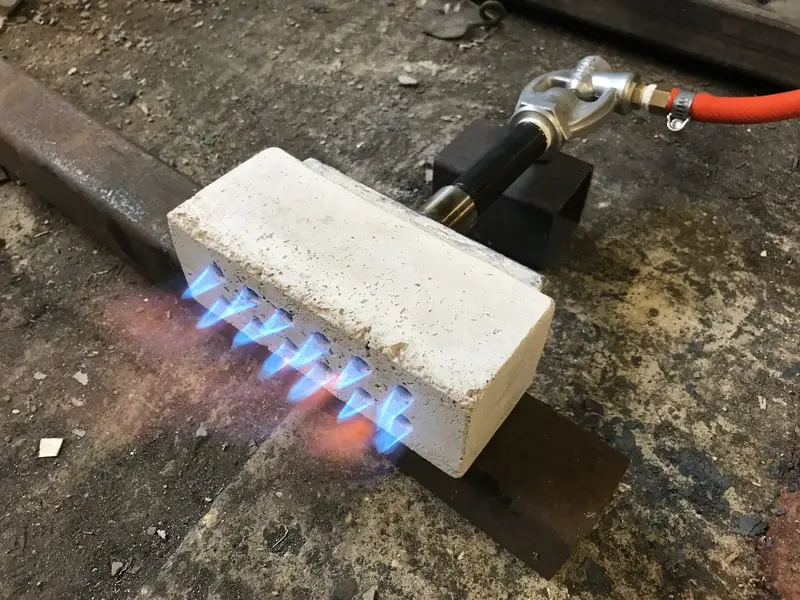
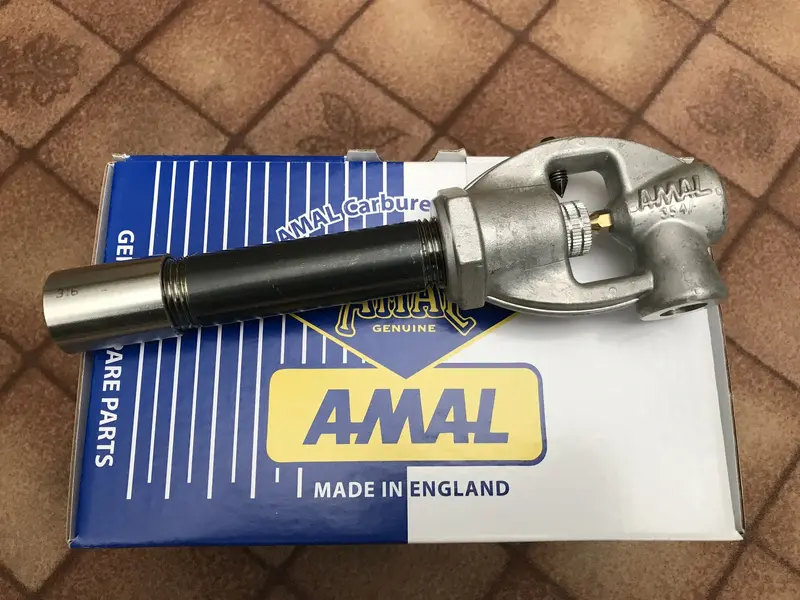
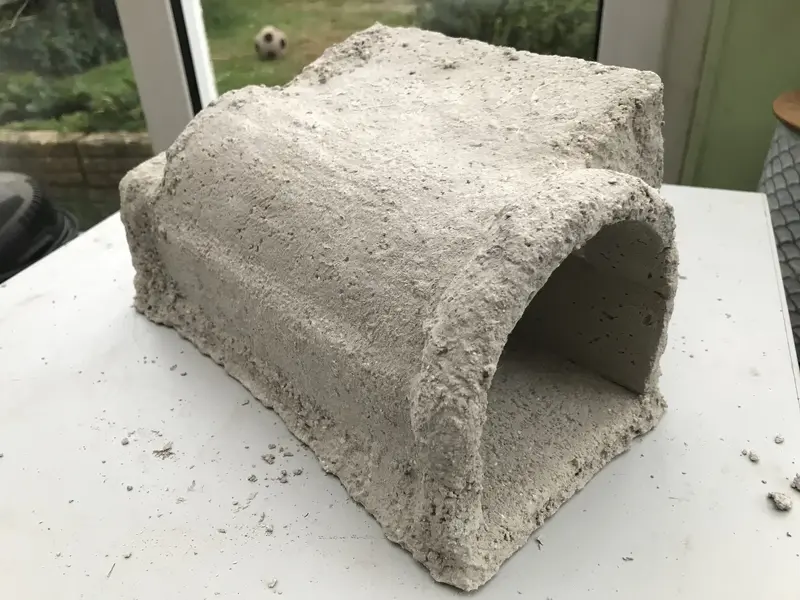
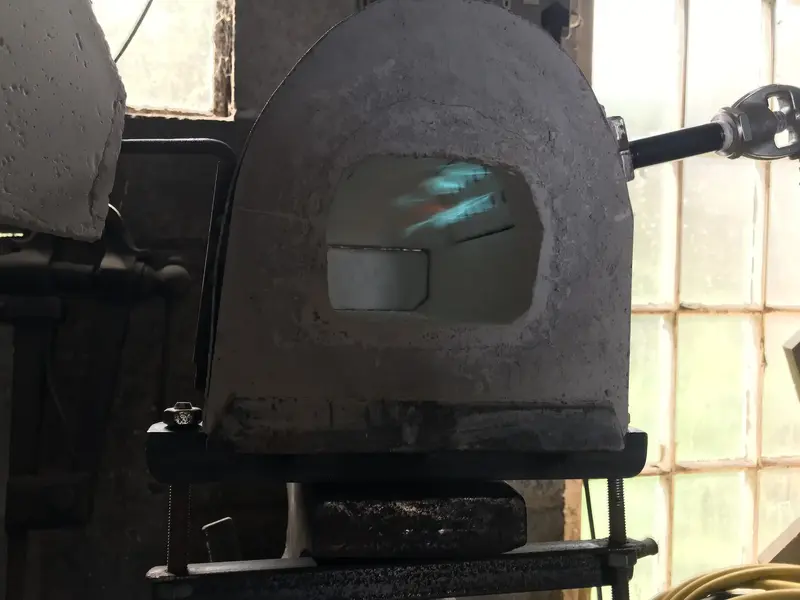
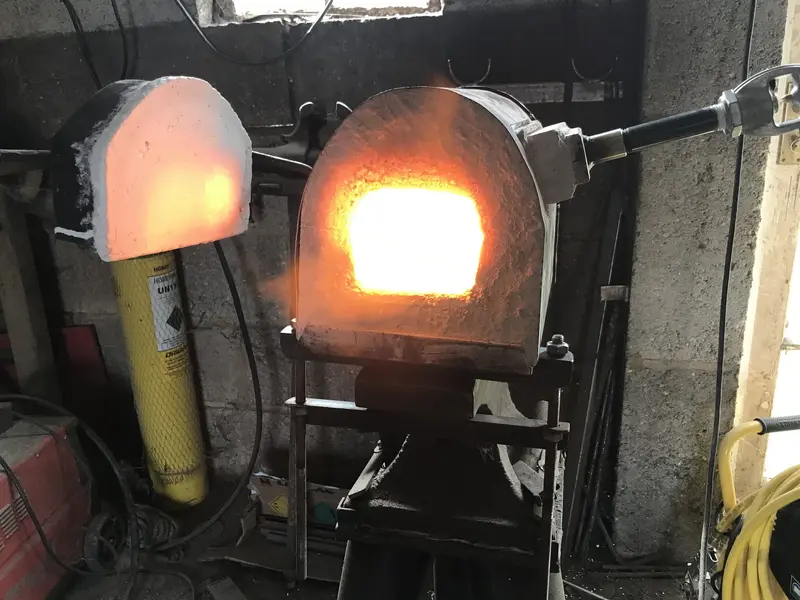
Nice.
- Feedback
- View
I'd better check it works... I need around 1300 degrees C
Weld up a couple of canisters and coat them with white paint - The paint contains titanium dioxide which will prevent the canister welding to the powdered steel.

And add a few stainless steel scouring pads

No pics of teh next bit, but I compress/compact the whole lot down HARD and weld the top on. it goes in teh forge for about 25 mins to fully heat through - the new forge gets hot enough in about 20 mins, and when it comes out the steel is white hot. smashy smashy and fingers crossed...




Result. It's compressed by about 2/3 and appears solid
Time spent prepping everything, getting forge up to temp and removing the canister... about an hour and a half.
Weld up a couple of canisters and coat them with white paint - The paint contains titanium dioxide which will prevent the canister welding to the powdered steel.
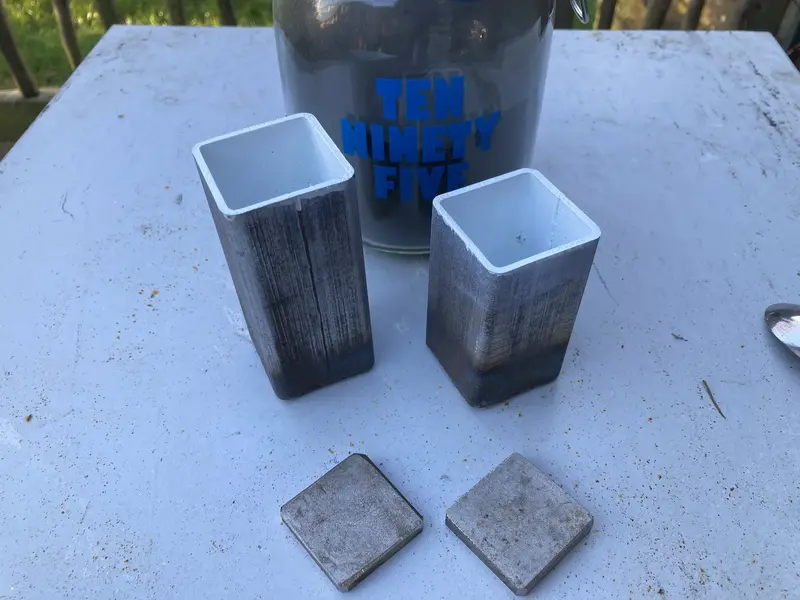
And add a few stainless steel scouring pads
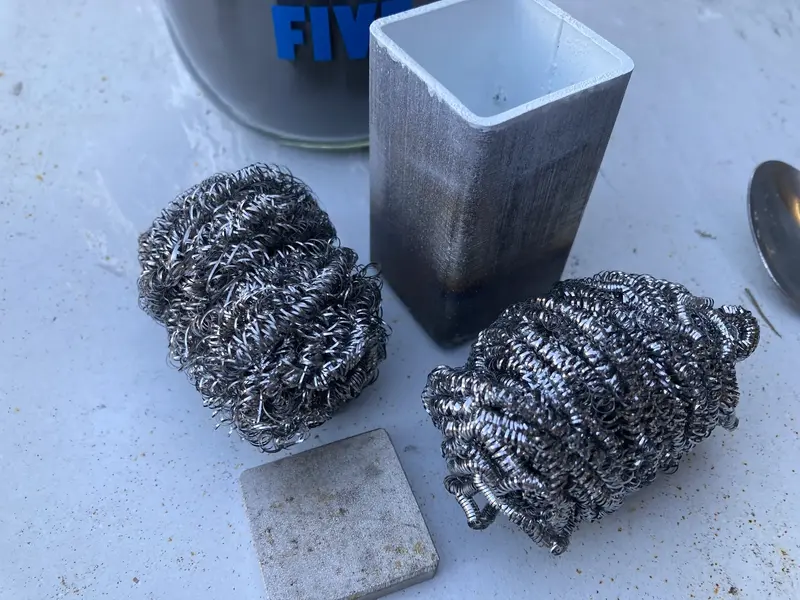
No pics of teh next bit, but I compress/compact the whole lot down HARD and weld the top on. it goes in teh forge for about 25 mins to fully heat through - the new forge gets hot enough in about 20 mins, and when it comes out the steel is white hot. smashy smashy and fingers crossed...
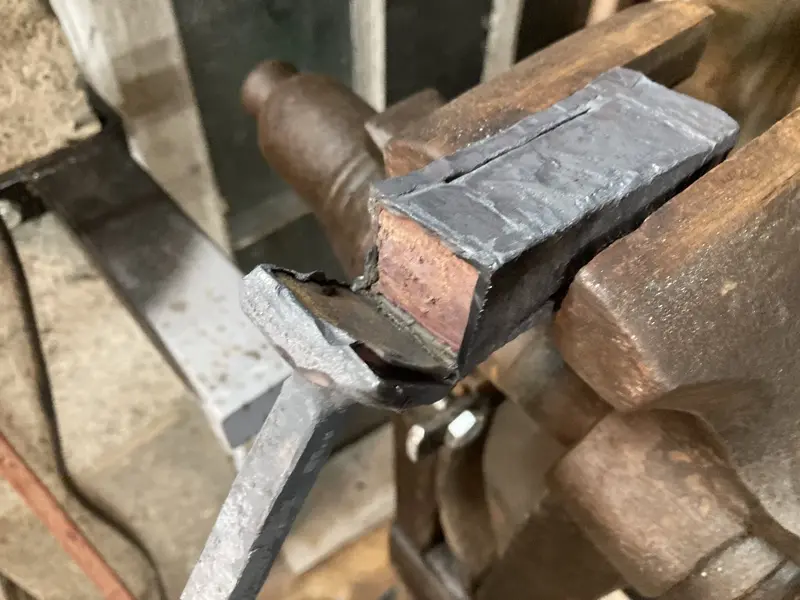
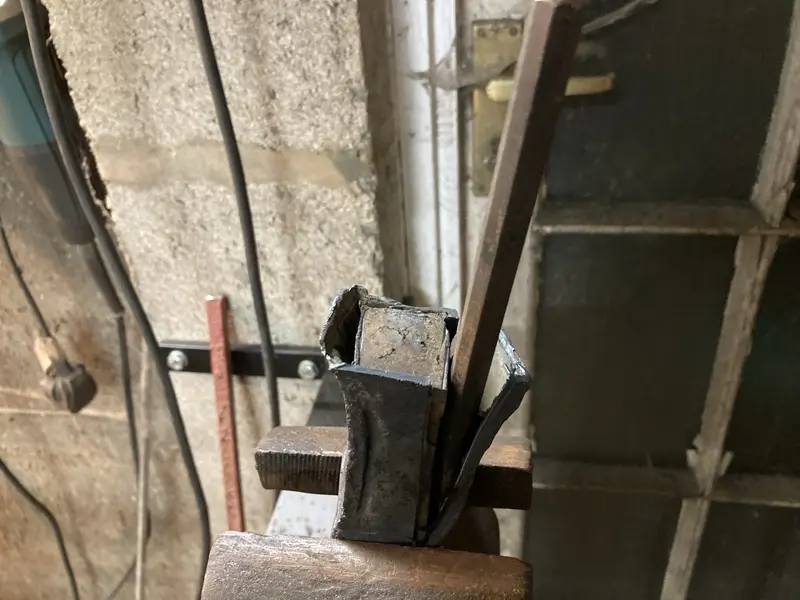
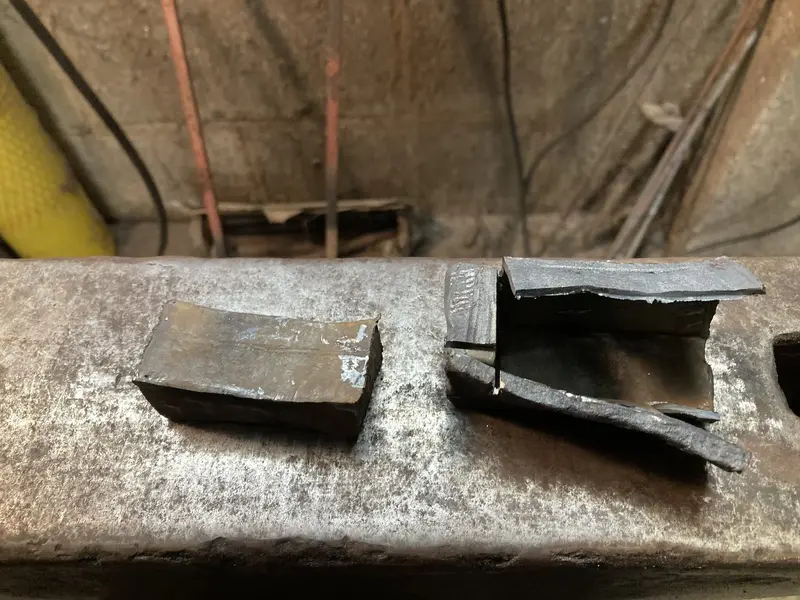
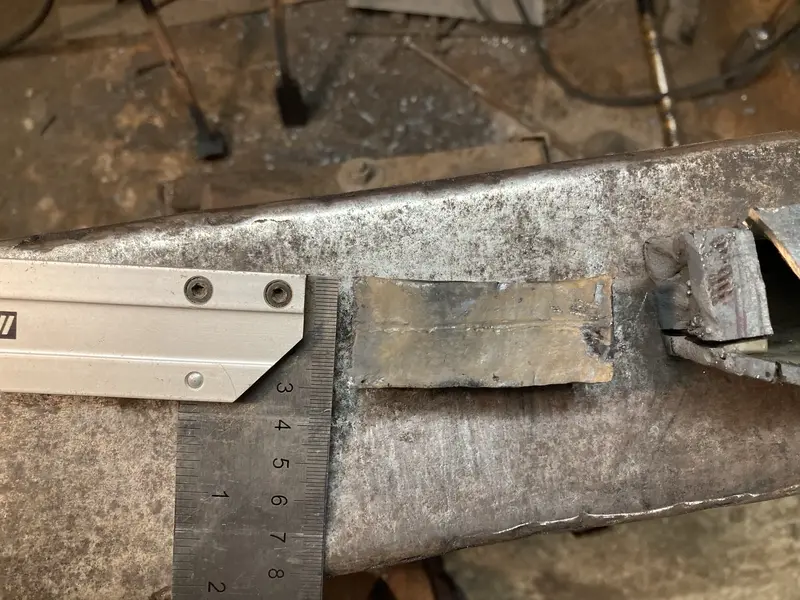
Result. It's compressed by about 2/3 and appears solid
Time spent prepping everything, getting forge up to temp and removing the canister... about an hour and a half.
- Feedback
- View
Looking forward to updates Steve
- Feedback
- View
Blacksmiths LOVE tongs. You can never have enough Tongs. Each tong has a specific use, and, you can never have enough tongs. I love tongs.
Made these three today.
(Nerd alert - a set of small v bit, some slot jaw, and a pair of scrolling tongs)

You'll note (pay attention at the back!) that the V bit and slot jaw are left handed, while the scrolling tongs are right-handed.

Anyways, While knocking the tongs up, I had another canister heating;

Peeling off the canister is SOOOoooo satisfying!

After a quick test etch, can you guess what went into this one?


I've got a number of billets made up now, better get on and make something out of them
Made these three today.
(Nerd alert - a set of small v bit, some slot jaw, and a pair of scrolling tongs)
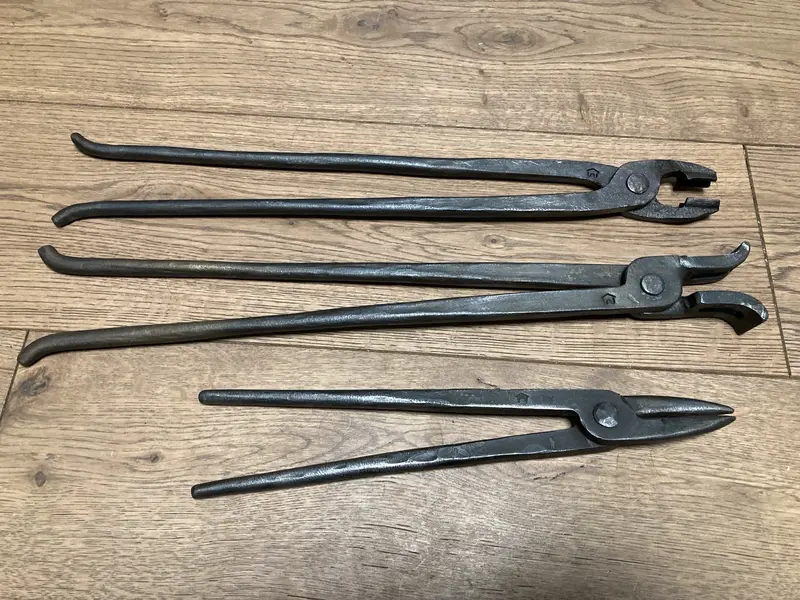
You'll note (pay attention at the back!) that the V bit and slot jaw are left handed, while the scrolling tongs are right-handed.
Anyways, While knocking the tongs up, I had another canister heating;

Peeling off the canister is SOOOoooo satisfying!
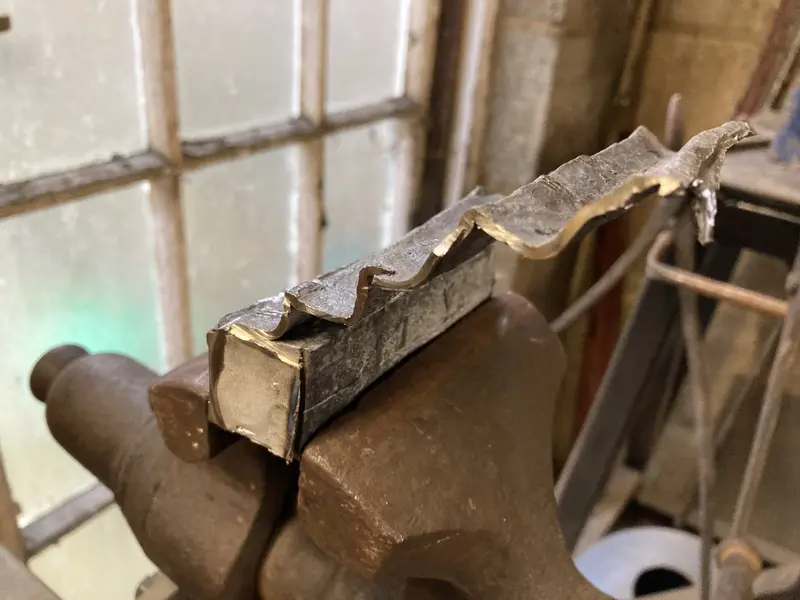
After a quick test etch, can you guess what went into this one?

I've got a number of billets made up now, better get on and make something out of them
- Feedback
- View
whats the etch - chain link plates?
- Feedback
- View
That canister was filled with an old Sram chain (totally disassembled) and filled with 1095 steel powder.

Once heated and compressed enough, the chain and powder weld together, forming a solid billet of steel.
The etch is basically soaking the metal in a ferric chloride solution. Depending on the specific elements of the steel itself, it'll etch differently. So, a steel high in carbon etches darker, but a high nickel steel won't etch much at all, and stay silver. the chainlinks you can see in the billet above are the ones that settled against the side of the canister when I was packing it in It also shows that they are a nice high carbon steel (carbon makes steel strong). It's not a just a pattern, it's the actual chain.
It also shows that they are a nice high carbon steel (carbon makes steel strong). It's not a just a pattern, it's the actual chain.
The flipside of this is that *if* I make a blade from it (or the scouring pad billet), the edge will have dissimilar metals along its length (and somewhat unknown metals at that) so a blade will need an extra step to make it usable. Dissimilar metals aren't really a problem until I start to heat treat things. 15n20, 1095, 52100, 5160, are all steels that compliment each other, but if (and it's unlikely) the chain was made from something like D2 (an air hardening steel) the mix along the cutting edge would be a disaster.
ZZZZZZZZZZzzzzzzzzzzzzzzzzzz...
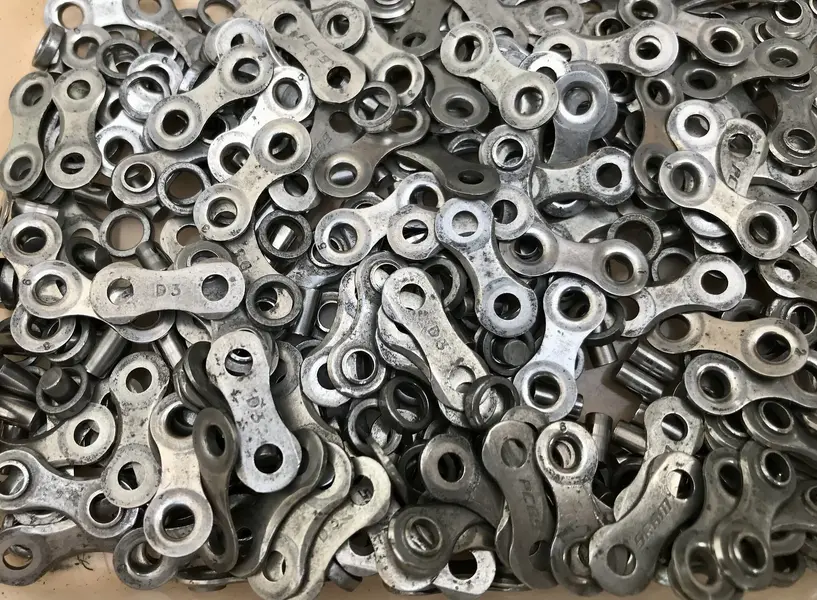
Once heated and compressed enough, the chain and powder weld together, forming a solid billet of steel.
The etch is basically soaking the metal in a ferric chloride solution. Depending on the specific elements of the steel itself, it'll etch differently. So, a steel high in carbon etches darker, but a high nickel steel won't etch much at all, and stay silver. the chainlinks you can see in the billet above are the ones that settled against the side of the canister when I was packing it in
The flipside of this is that *if* I make a blade from it (or the scouring pad billet), the edge will have dissimilar metals along its length (and somewhat unknown metals at that) so a blade will need an extra step to make it usable. Dissimilar metals aren't really a problem until I start to heat treat things. 15n20, 1095, 52100, 5160, are all steels that compliment each other, but if (and it's unlikely) the chain was made from something like D2 (an air hardening steel) the mix along the cutting edge would be a disaster.
ZZZZZZZZZZzzzzzzzzzzzzzzzzzz...
- Feedback
- View
Genuinely Interesting 
I’ll have to take your word for what’s above as generally speaking I’ve no idea on a lot of it as most of it went over my head
I’ll have to take your word for what’s above as generally speaking I’ve no idea on a lot of it as most of it went over my head
- Feedback
- View
Genuinely Interesting
I’ll have to take your word for what’s above as generally speaking I’ve no idea on a lot of it as most of it went over my head
I wouldn't trust me!
but, If you look closely at the pic of the billet, you can see the shape of the chain link has a halo of silver - that's the nickel plating that wont etch
bikeworkshop
Old School Grand Master
I wouldn't trust me!
but, If you look closely at the pic of the billet, you can see the shape of the chain link has a halo of silver - that's the nickel plating that wont etch
Brilliant!
So how many fake 50p's can you knock out of an evening, and do they work in fag machines
One of our shop neighbours used to sell "cheap" gold chains, rumour has it he was familiar with Kenneth Noye and John Palmer - who operated a forge in his Bath back garden
It wasn't old bicycle chains they were working with though...
Similar threads
- Replies
- 17
- Views
- 17K
- Replies
- 71
- Views
- 29K
- Replies
- 26
- Views
- 17K
